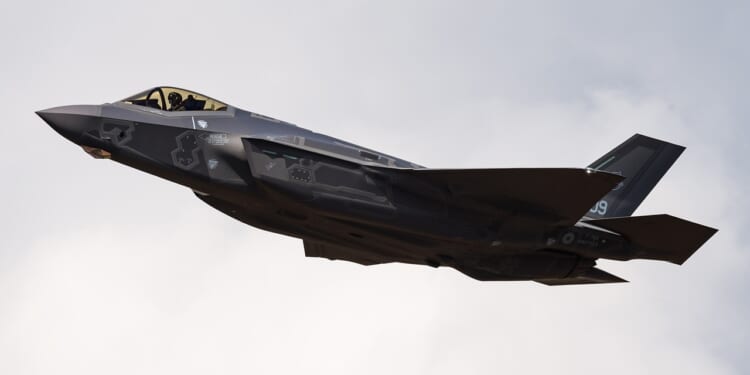Belgium is one of the smallest countries in Europe—with dimensions that are simply too short to accommodate the training needs of F-35 pilots.
Earlier this month, NATO member Belgium welcomed its first four Lockheed Martin F-35A Lightning II fighter jets, which will equip the Belgian Air Force’s 1st Squadron at Florennes Air Base in Wallonia.
As previously reported, Brussels has set a goal of having at least four of the fifth-generation fighters in service and deployable for “quick reaction alert” (QRA) by early 2027.
Now that the initial batch of F-35A, the conventional takeoff and landing variant of the Joint Strike Fighter, has arrived in the Benelux nation, a new “problem” has emerged, according to The Brussels Times. The Lightning II is an advanced aircraft that promises to increase the capabilities of the Belgian Air Force—but given the aircraft’s tremendous speed, training effectively while remaining within the country’s tiny airspace simply isn’t possible.
Belgium is just 30,843 square kilometers (11,909 square miles) in total area, including water, and measures only around 300 kilometers (186 miles) from end to end. These dimensions are simply too short to accommodate the training needs of F-35 pilots.
“[It] will not be sufficient to accommodate training missions,” with the F-35, Belgian Minister Theo Francken told lawmakers in a House committee hearing last week.
America Has Many Wide Open Spaces—Belgium Doesn’t!
This past summer, Belgian officials announced that the country would increase its F-35 acquisition from 34 to 45 aircraft, with the initial fleet to be operational by 2031.
Throughout this year, Belgian aviators, joined by maintainers and other personnel, have conducted training at Luke Air Base in Arizona. Even though Luke AFB is located in Glendale, a suburb of Phoenix, it has numerous training ranges, including the Barry M. Goldwater Range, a 1.7-million-acre area southwest of the base. Pilots are able to use these vast expanses for air-to-air and air-to-ground combat training.
By contrast, Belgium offers only a tiny portion of its already-limited airspace for F-35 training.
Brussels has already turned to NATO partners, including the Netherlands, Italy, and Norway, where training could be carried out. It wasn’t an entirely unexpected issue, as the country had previously experienced a similar issue while training its F-16 pilots.
France Has a Laugh at Belgium’s Expense
The news that Belgian pilots will have to train in other countries was met with some “not-so-gentle teasing” from other NATO members—notably from French broadcaster BFMTV, which described the situation as a “bad Belgian joke.”
France is among the NATO members that opted not to purchase the Lockheed Martin fifth-generation F-35 Lightning II, and has positioned its competing Dassault Rafale as a versatile non-stealth aircraft. Moreover, France has partnered with Germany and Spain to develop the sixth-generation Future Combat Air System (FCAS), with Belgium seeking to join as a junior partner.
Éric Trappier, CEO of the French-based Dassault Aviation, which is leading the FCAS program, questioned Brussels’ commitment to the sixth-generation fighter as it also expanded its F-35 acquisition. However, the additional 11 F-35s will have their final manufacturing completed in Italy, not at Lockheed Martin’s facility in Fort Worth, Texas.
The Lightning IIs will replace the Belgian Air Force’s aging fleet of F-16s, with Brussels pledging to supply 30 of its 45 Fighting Falcons to Ukraine beginning next year.
About the Author: Peter Suciu
Peter Suciu has contributed over 3,200 published pieces to more than four dozen magazines and websites over a 30-year career in journalism. He regularly writes about military hardware, firearms history, cybersecurity, politics, and international affairs. Peter is also a contributing writer for Forbes and Clearance Jobs. He is based in Michigan. You can follow him on Twitter: @PeterSuciu. You can email the author: [email protected].
Image: Shutterstock / BeAvPhoto.

















